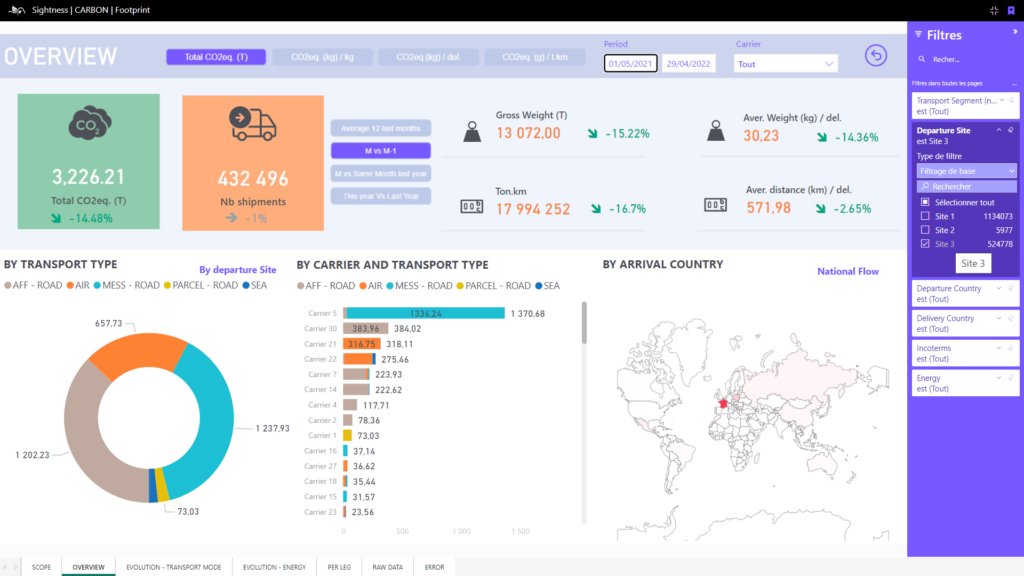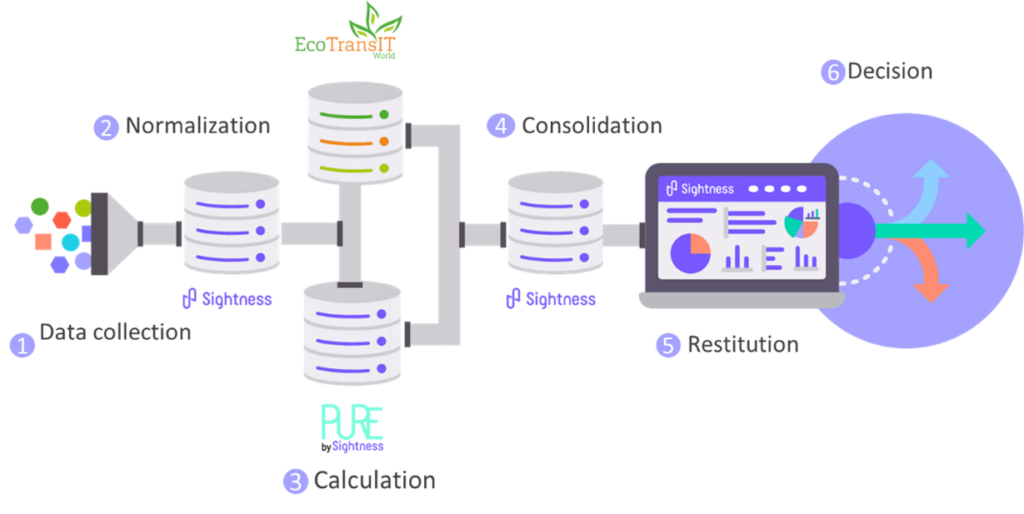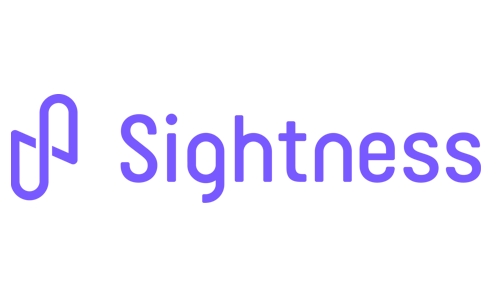Sightness
collects, expands, improves and analyzes transport data to help its customers provide better services with less effort.

Sightness is an advanced analytics platform for transportation performance.
They were founded in 2015 by the leading freight forwarding consultancy in Europe. Today, they fly on their own steam. With 140 employees dealing with CO2, cost and quality issues and covering all modes of transport and countries.
Their three intelligent modules “Carbon”, ‘Quality’ and “Cost” are all based on primary data that can come from all kinds of transportation data sources, such as shippers’ ERP or TMS systems or carriers’ operational or billing systems.
With the Carbon module, they provide a reliable measurement of greenhouse gas emissions taking into account the operational reality, even if information or data is incomplete.
Carbon consists of three functionalities:
- PURE is the calculation tool
- FOOTPRINT is the greenhouse gas emissions dashboard
- TRANSFORM is the simulation tool
The aim is to provide a comprehensive package for the decarbonization of transport by combining the following:
- Accurate calculation
- Management of transport activities
- Identification of levers specific to a given organization
- Support in meeting non-financial reporting requirements with verifiable results

The Integration of EcoTransIT World
The EcoTransIT methodology follows a bottom-up approach based on fuel consumption estimates.
This approach enables EcoTransIT to be more accurate in its calculations by taking into account the specific characteristics of the transport scheme for each shipment, but it also requires the availability of a wide range of information (such as vehicle size, energy type, empty run factor, load factor, etc.), which is very scarce in reality.
To solve this problem of information availability, they have created a model of the international network (from parcels to groupage, national and international – GLEC-certified) that provides all the information needed to accurately calculate emissions, even when the raw data is weak or incomplete.
In order to provide a uniform emissions calculation and management service for every scope and type of transport, they have established a partnership with EcoTransIT World. For all types of transport other than road transport in the European network:
- The data is collected, normalized, and enriched by Sightness’ carbon and IT teams.
- The calculation specifications are created by Sightness’s carbon team based on data collection, surveys on transport plans, and transport expertise
- The specifications are developed by Sightness’s IT team and automatically sent to EcoTransIt World or Sightness’s network tool via an API
- The greenhouse gas emissions results are received by Sightness’ carbon team, verified, and made available to the user in a standard or customized dashboard
- Sightness’ CO2 emissions and CSM teams help users understand and monitor the results.
Key features of the Sightness platform
There is currently no calculation method or certification that can guarantee that greenhouse gas emissions transferred from carriers or logistics service providers are comparable from one actor to another, unless the calculation is based on actual fuel consumption, and even then, allocation per shipment and shipper remains an issue.
The sector’s ambitious decarbonization targets require industry players to equip themselves with tools that enable them to
- Manage the complexity of data collection: completeness of scope
- Improve data cleansing and formatting: quality of raw data
- Automation of activity data enrichment through database consolidation and implementation of management rules: consideration of organizational specificities
- Enabling the use of reliable, verifiable results for non-financial reporting and communication with the shipping company’s customers: communication and regulatory compliance
- Enabling the analysis of impacts and deviations, the identification of levers, and the monitoring of improvements thanks to intelligent and specific dashboards: progress and reduction of emissions


